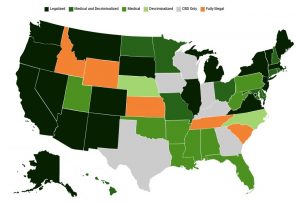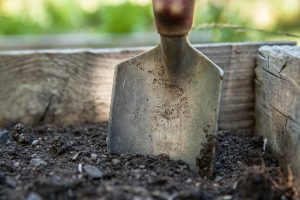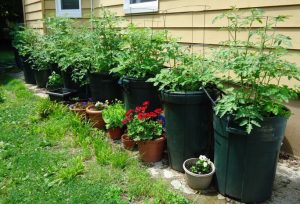Growing cannabis is a great way to save money and enjoy the highest-quality flower. If you’ve been considering growing your own but don’t know where to start or what equipment to use, this blog post is for you. We’ll discuss everything from learning your state’s laws to choosing the perfect spot to grow your herb, all the way through to the harvesting. Let’s get started!

Know Your State Laws
Before you begin growing cannabis in your backyard, you’ll want to keep your state’s laws in mind. Each state will have different regulations on how many plants you can grow and how much bud you can produce.
Not following your state’s laws surrounding cannabis farming isn’t just a matter of ignorance—it could result in fines or even jail time. Thankfully, the Internet offers a plethora of resources to keep you up-to-date on the latest laws and regulations surrounding your favorite herb. Just make sure to do your research and you should be golden! (EDITOR NOTE: Our own state-by-state cannabis legalization guide is one such resource).

Choose the Perfect Spot for Your Plant
Like most plants, cannabis needs direct sunlight for at least six hours a day, so you’ll want to place it in any area that gets lots of sun around midday. This is when the sun is at its highest peak, producing the best quality of light!
Light breezes can be good for your plant, as they keep away pests and bring more nutrients, but too much wind could destroy all of your hard work. If you need a wind block, try to put up a fence or place your cannabis behind a row of bushes.
Apart from the environment, one other thing you might want to keep in mind is people. While cannabis is legal in many states across the nation, there’s still some social stigma surrounding it. If you’re worried about giving the wrong impression in your neighborhood, you’ll want to keep privacy in mind. Most laws actually require that plants be hidden from the street.

Get the Right Soil and Nutrients
Cannabis plants prefer soil that contains a lot of nutrients and organic matter while providing plenty of drainage. Some homeowners choose to dig a sizable hole in the backyard and put down fresh soil, while others prefer to place their plants in a pot.
By using a pot, you can maintain better control over the exact amount of soil and nutrients you use. If you do choose to plant your cannabis into existing soil, you’ll want to perform a soil test first to ensure that it has all the right nutrients for your plant to flourish.
When completing a soil test you will be looking at:
- pH
- Water Retention
- Clay
- Sand
- Silt
- Nutrient Makeup
- Drainage
If your soil isn’t showing the right levels, then high-quality potting soil is the next best alternative. It’s designed to contain the right balance of nutrients, so you can plant wherever you please!

Pick Your Growing Containers
Cannabis is a highly adaptable plant, meaning it can be grown in a variety of containers. The one you choose can be based mostly on personal preference and your specific needs.
If you need to move your plant often or you won’t be in the same location for very long, a pot may be the best choice. As mentioned above, these containers also allow you to more directly control the levels of nutrients, water, and soil you add to the plant.
If you’re looking to grow a small-to-medium-sized plant, a 5-gallon pot may be just what you need to get started. Plants that will grow to 10 feet or higher will require a 10-gallon pot.
You can also install a raised garden bed in your backyard if you’re looking for something more long-term. Size is a consideration here, though, as even larger beds can restrict your plant’s roots and, by extension, its growth.
Learn How to Care for Your Plant
Cannabis plants grown outdoors can be tricky because they are never on a set schedule. Exposure to the elements means that your plant’s growth cycle will vary depending on the water, sunlight, nutrients, and temperatures in the environment. To grow cannabis in your backyard, you’ll need to learn the typical stages of growth. That way, you’ll be able to recognize subtle transitions and respond accordingly!
Typically, cannabis harvest time occurs around October, but if you’re in an area that’s prone to early winters, you might consider harvesting in September. Plants that don’t receive enough sunlight may also flower earlier than normal.
The key here is to know how your plant will react throughout the year so you can be on the lookout for any changes or warning signs regardless of the month or the weather. You’ll also need to research your plant’s maintenance and care needs. Trimming the right way and making sure you prune your plants carefully will be key to their growth and survival.

Don’t Forget to Enjoy
After putting in all the work to get to the harvest, don’t forget to take some time to enjoy the fruits of your labor! Whether you’re using a bong, a dab rig, or even making edibles, there are so many options available for recreational and medicinal cannabis use.
Growing cannabis in your backyard doesn’t have to be an intimidating task. As long as you’re informed and have the tools you need, you can start growing! Stay curious and keep learning new techniques to become a better grower and get the best results.
Editor’s conclusions:
Thanks to Tess DiNapoli for this enlightening guest post!
If you need help diagnosing and correcting nutrient deficiencies in cannabis plants, we have a guide on that too.
Readers, you can also share your tips on home-growing cannabis for personal use in all its forms. Fire away here in the comments or in our forum.










I really enjoyed reading such an article 😊 more especially when taking of cannabis. The plant that gives kind to Mankind and Calm to Calmness 💘 😻
I really enjoyed reading such an article 😊 more especially when taking of cannabis. The plant that gives kind to Mankind and Calm to Calmness 💘 😻 💜 💛